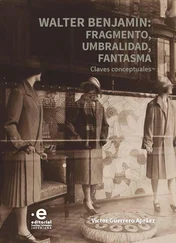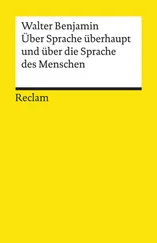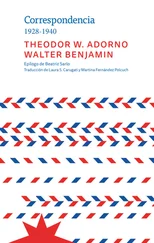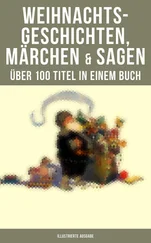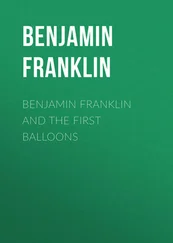2For reasons discussed below, the exact number of broadcasts has been difficult to determine. To date, the most detailed account of the archival traces left by the radio works — including extant typescripts and announcements of dates of broadcast in the program guides of the Berlin and Frankfurt radio stations — can be found in Sabine Schiller-Lerg’s Walter Benjamin und der Rundfunk (Munich: K. G. Saur, 1984). In the Appendix to this volume, I have followed and added to Schiller-Lerg’s chronology of the broadcasts, where she lists a total of eighty-six known and dated broadcasts by Benjamin. Some typescripts of broadcasts Benjamin is known to have given are, however, missing, lost, or undatable. Given the possibility that Benjamin gave additional broadcasts, and that for some of the known broadcast dates the titles remain uncertain, it is not possible to provide a complete account of the history and dissemination of Benjamin’s radio archive. According to Schiller-Lerg, “Around ninety scripts have been found or reconstructed” (“Walter Benjamin, Radio Journalist: Theory and Practice of Weimar Radio,” trans. Susan Nieschlag, Journal of Communication Inquiry 13.1 [1989], 45). One should note, however, that this number refers to the total number of broadcasts , in other words the readings and performances of Benjamin’s radio scripts (in most but not all cases, Benjamin read the works himself or participated in their production). In some cases, Benjamin delivered the same or similar material on Radio Berlin and Radio Frankfurt (and in one case Radio Cologne). For further information about Benjamin’s broadcast output and the known dates of his radio performances, see the Appendix.
3Douglas Kahn, “Introduction: Histories of Sound Once Removed,” in Wireless Imagination: Sound, Radio, and the Avant-Garde, eds. Douglas Kahn and Gregory Whitehead (Cambridge, MA: MIT Press, 1992), 2. Denis Hollier casts the argument for radio’s medial specificity even more pointedly, putting it in terms of what he calls the “nonarchivable afterlife” of broadcast, or broadcast defined as live, ephemeral, and non-cooptable event. “Unless it leaves a deposit on an archivable support, sound remains merely an event and disappears without a trace, without being able to be repeated, cited, convoked … The characteristic specific to radio is that it is live. The living word flows from it and expends itself unreservedly. The fact that it leaves no trace cannot be blamed on a temporary defect, linked to the medium’s immaturity: that is its very definition. This definition is threatened by the progress of recording technology and by the social success of radio.” Hollier describes this specificity as a radical “calling of live broadcasting,” or “radiophonic utopia,” an impossible, apocalyptic finality built upon the possibility that radio speech, not unlike sacred speech, might remain unrepeatable and therefore beyond contamination. In this sense radio might legitimately, if also forgettably, declare the end of the book (“only radio can proclaim the death of paper”): whereas literary or graphic declarations of the end (of literature, books, writing, archivization, the world) confront the double-bind of their own ongoing iterability, a radio event might plausibly announce itself as the last to speak, the definitive break, the ultimate sign-off. Hollier, “The Death of Paper: A Radio Play,” October 78 (Fall 1996), 18–19. Benjamin’s broadcasts, even those that take catastrophe and disaster as their subject, do not share this taste for positing radio as essentially one-way or anarchival.
4Mladen Dolar, A Voice and Nothing More (Cambridge, MA: MIT Press, 2006), 60. In his book Radio (1936), Rudolf Arnheim puts the condition succinctly, stating of the radio announcer: “His is one of the purest of radio features achievable in words. He is nothing but a voice, his corporeal existence is not included in the broadcast. He exists, like music, not beyond but in the loudspeaker.” Arnheim, Radio , trans. Margaret Ludwig and Herbert Read (London: Faber and Faber, 1936), 197. For a critical discussion of the acousmatics of sound reproducibility, see Jonathan Sterne, The Audible Past (Durham: Duke University Press, 2003), 20–6.
5Schiller-Lerg, “Walter Benjamin, Radio Journalist,” 45. For the eighty-six broadcast-events she lists in her book, Schiller-Lerg suggests that Benjamin probably did not participate in the actual on-air broadcasts of eight of them ( Walter Benjamin und der Rundfunk, 530–41). For additional comments on Benjamin’s radio performances and his process of improvisation, see the editors’ notes to Benjamin, Gesammelte Schriften vol. 7.2, eds. Rolf Tiedemann, Hermann Schweppenhäuser, et al. (Frankfurt: Suhrkamp, 1989), 584. See also Klaus Doderer, “Walter Benjamin and Children’s Literature,” in “With the Sharpened Axe of Reason”: Approaches to Walter Benjamin , ed. Gerhard Fischer (Oxford: Berg, 1996), 171–2.
6On this recorded fragment of the Cologne broadcast of Much Ado About Kasper , see Schiller-Lerg, Walter Benjamin und der Rundfunk , 252–69; Klaus Doderer, “Walter Benjamins dreifaches Interesse an der Kinderliteratur: Sammler, Theoretiker und Autor,” in Walter Benjamin und die Kinderliteratur , ed. Doderer (Weinheim: Juventa, 1988), 30, n. 5; and Philippe Baudouin, Au microphone: Dr. Walter Benjamin: Walter Benjamin et la création radiophonique, 1929–1933 (Paris: Éditions de la Maison des sciences de l’homme, 2009), where what remains of the recorded broadcast is included as part of a CD that accompanies the book. As of this writing, the audio-recording is also available online at www.youtube.com, under the title “Walter Benjamin: Radau um Kasperl (1932).”
7Arnheim captures the difficult, and one might say phonocentric, relationship between script and broadcast performance when he claims that the latter necessarily exceeds and cannot be properly captured by the former. On the one hand, Arnheim prescribes a meticulous approach to preparing the broadcast script, such that “when one is drafting out a wireless talk, one must consciously include in the script the personal tone of voice and way of speaking, quite indifferent as to whether the resultant ‘score’ of the talk makes at the same time a good piece of printed literature or not” ( Radio , 218). And yet, even the most elaborate script is bound to remain inferior and inadequate to the improvised performance, such that “To print broadcast talks quite literally is in most cases a complete mistake” (218–19).
8On early radio and its rarefied incunabula, see Sterne, The Audible Past, 288.
9Benjamin comments on his process of dictation, along with its “liberating” effects, in the correspondence. See letter to Scholem of January 25, 1930, in Benjamin, The Correspondence of Walter Benjamin, 1910–1940 , eds. Gershom Scholem and Theodor W. Adorno, trans. Manfred R. Jacobson and Evelyn Jacobson (Chicago: University of Chicago Press, 1994), 361; letters to Scholem of February 5, 1931 and February 28 1932, in The Story of a Friendship , trans. Harry Zohn (New York: New York Review Books, 2003), 209–10, 227–8. For more on the effects of Benjamin’s having dictated the radio materials, see the editors’ remarks in the Gesammelte Schriften , 7.2, 528–9.
10These are “known” broadcasts in the sense that other archival traces, including announcements in radio journals such as the Berlin station’s Funkstunde and the Frankfurt station’s Südwestdeutsche Rundfunk-Zeitung , testify to their having taken place. The lost or missing broadcasts can be divided into two categories: broadcasts for which no typescript remains whatsoever, and broadcasts for which some related material still exists, such as a print version published by Benjamin in a newspaper or journal. For further information on the lost or missing broadcasts, see the Appendix.
Читать дальше



